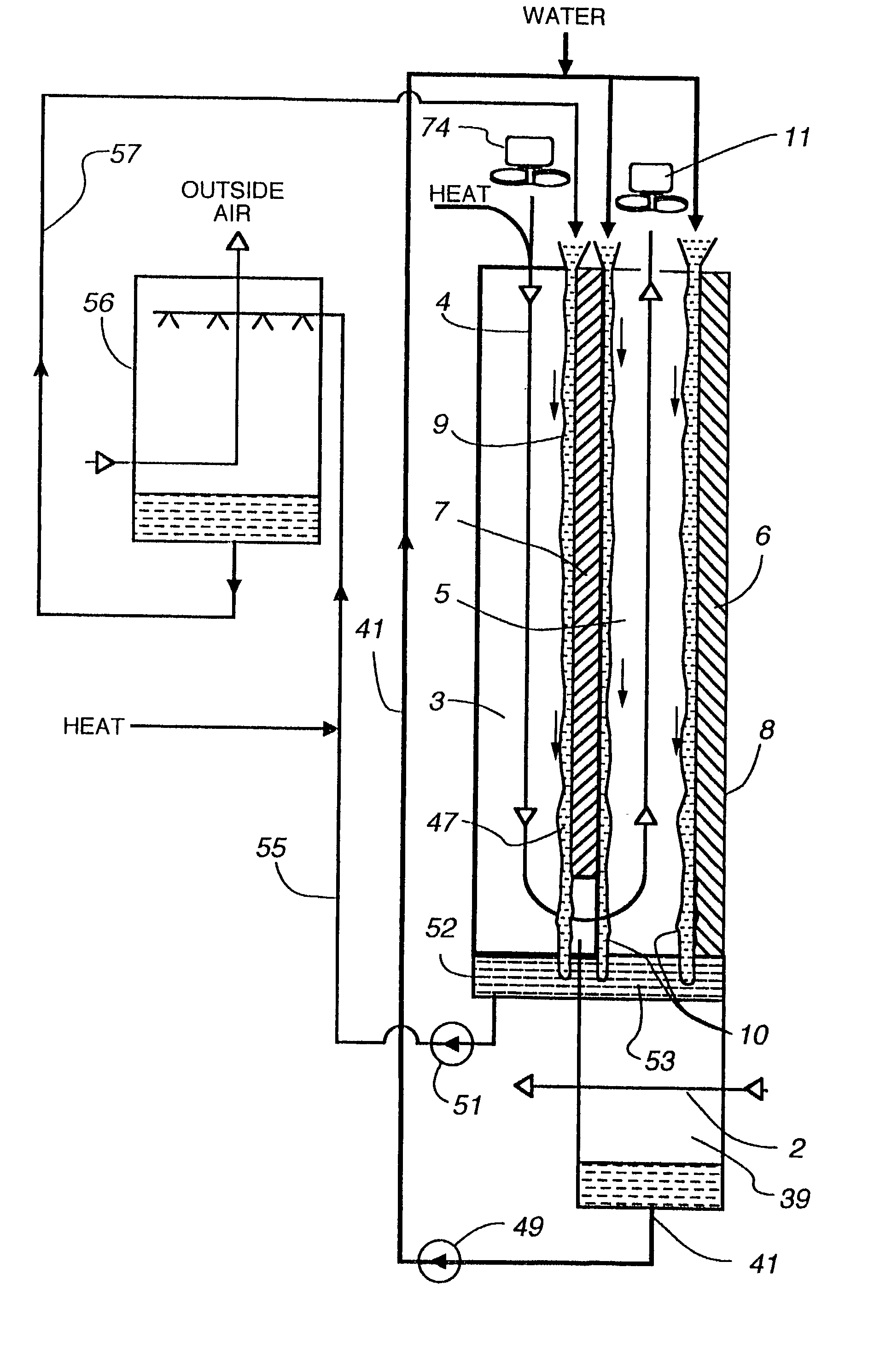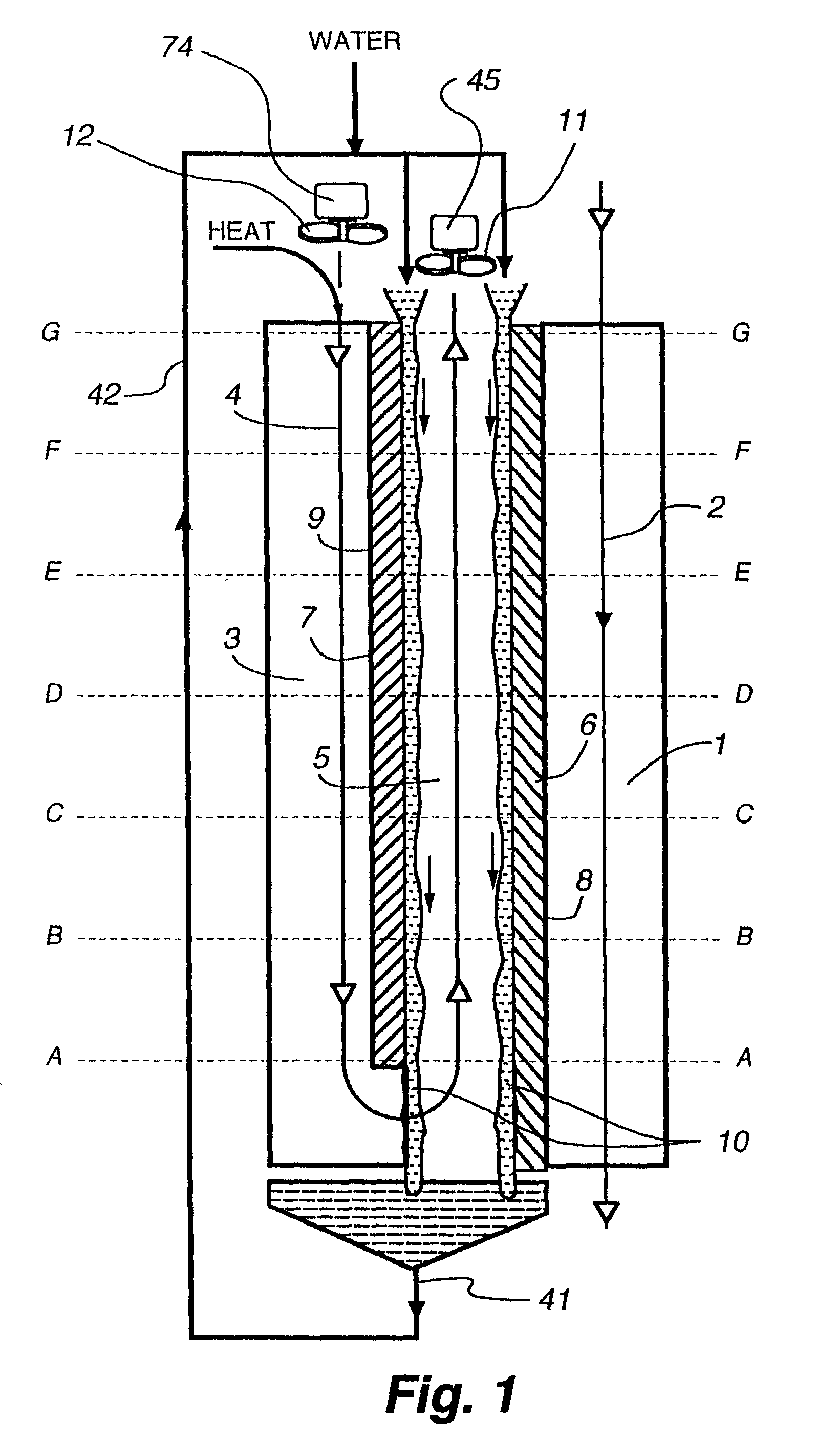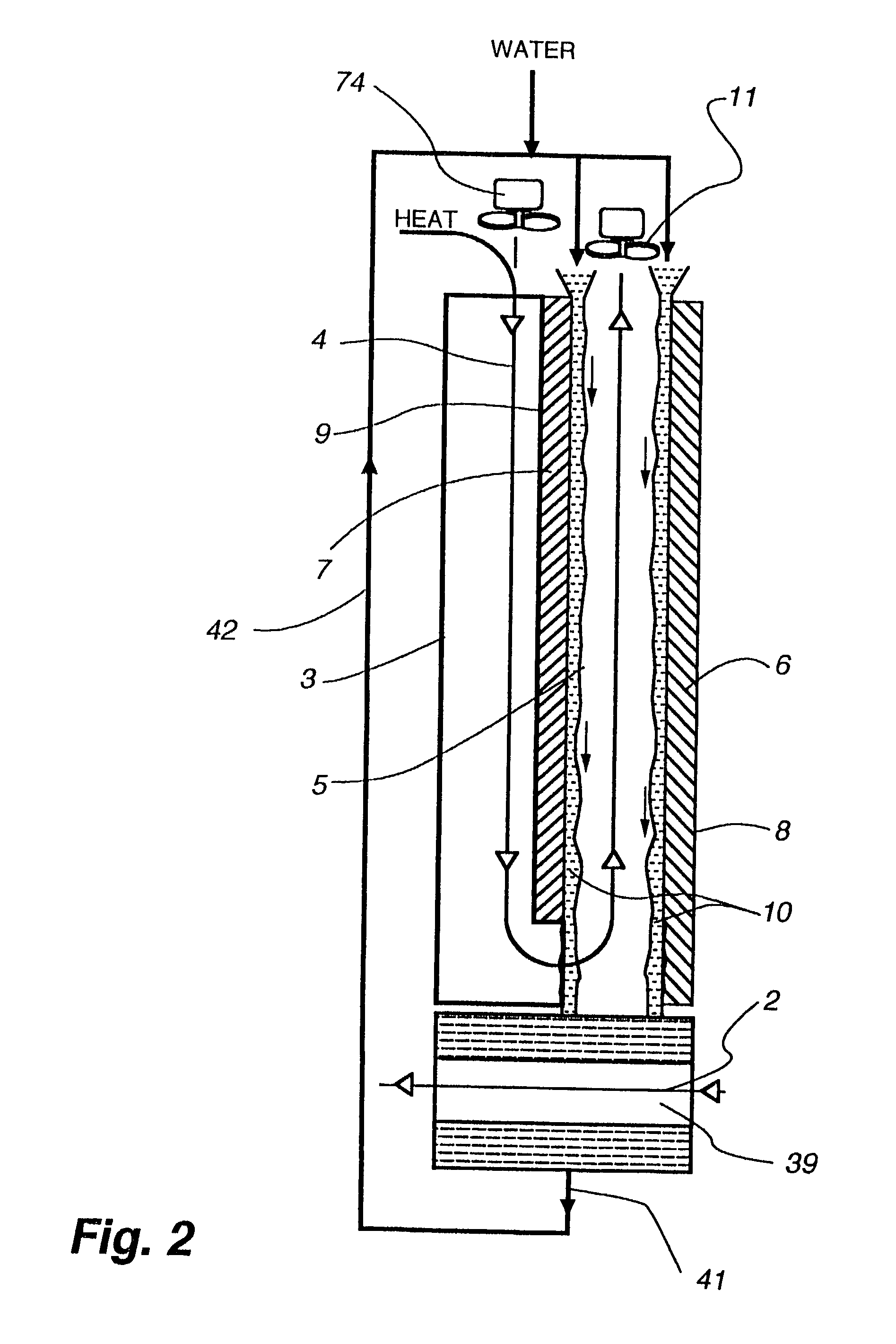Method and apparatus of indirect-evaporation cooling
a technology of indirect evaporation and cooling, which is applied in the direction of domestic cooling apparatus, lighting and heating apparatus, heating types, etc., can solve the problems of product fluids that cannot be cooled, inability to cool materials other than air or gas, and certain drawbacks and limitations, so as to achieve low energy consumption, low energy cost, and low energy cost
- Summary
- Abstract
- Description
- Claims
- Application Information
AI Technical Summary
Benefits of technology
Problems solved by technology
Method used
Image
Examples
Embodiment Construction
[0151] For purposes of illustrating the advantages of the apparatus and method disclosed herein, the applicants take the results using the apparatus disclosed in Russian patent No. 2046257 (Maisotsenko) [copied in U.S. Pat. No. 5,187,946]. We compare the results using the apparatus shown in FIG. 3 in Table #1.
[0152] The materials as used in the test of FIG. 3 are a wicking material on the wet surfaces made of cellulose blended fiber sold by Ahistrom Paper Group, Grade 1278 (0.2969 mm thickness), backed, for the dry side of the membrane, with 5 mil Mylar callendered with an adhesive (appropriate for the material).
[0153] This material is the best readily available product, though other materials may be used, such as an absorbent material, such as polypropylene with a polyethylene coating which was available from Ahistrom as Grade 4002. Another combination, using polyethylene coating on the Grade 1278, would have additional advantages.
[0154] The advantage of Grade 1278 is that it is sp...
PUM
 Login to View More
Login to View More Abstract
Description
Claims
Application Information
 Login to View More
Login to View More - R&D
- Intellectual Property
- Life Sciences
- Materials
- Tech Scout
- Unparalleled Data Quality
- Higher Quality Content
- 60% Fewer Hallucinations
Browse by: Latest US Patents, China's latest patents, Technical Efficacy Thesaurus, Application Domain, Technology Topic, Popular Technical Reports.
© 2025 PatSnap. All rights reserved.Legal|Privacy policy|Modern Slavery Act Transparency Statement|Sitemap|About US| Contact US: help@patsnap.com



